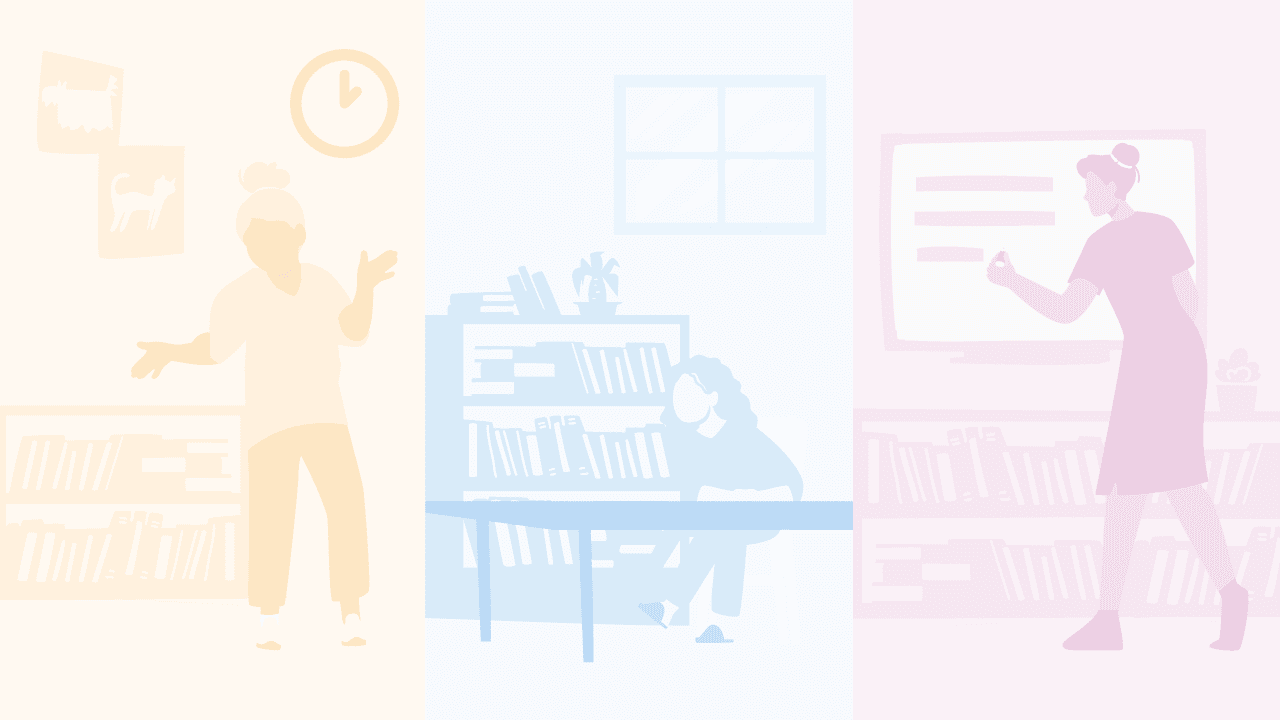Here are some of the additional challenges that many of our students face:
- Auditory processing (the ability to understand or process verbal language)
- Executive functioning (the ability to plan, focus attention, or organize thoughts)
- Time management and transitioning (the ability to effectively utilize and understand the passage of time)
- Reliance on routines (the need for predictability and stability; difficulty with changes)
- Communication and self-advocacy (the ability to express wants and needs)
- Emotional regulation and management (the ability to modulate responses to feelings or emotions appropriate to social norms)
As you read this list, some of your students likely come to mind. Think about how challenges in these areas impact your students daily, and then take a look at the following suggestions to get some ideas about how to better address those needs through their IEPs.
Auditory Processing
Students with auditory processing challenges may not clearly understand directions or process the information a teacher is verbally presenting even when they understand the actual content. When students have auditory processing deficits, they might appear as if they were choosing not to follow directions or complete assignments, when in reality they were simply not able to keep up with the pace of the lecture or comprehend the language the speaker is using.
Because students’ receptive language or processing skills may not match their cognitive abilities, we must teach them alternative ways to gain needed information, allowing for greater independence and success. They may need a variety of visual supports (visual cues that give the learner additional concrete information about the expectations, activity, or skills being taught) to better understand both academic material and classroom expectations. But we need to teach students the most effective ways to utilize the supports we give them. This is best achieved through writing IEP goals like the ones below. Remember that all of them should be individualized for each student, but these examples will give you starting points.
Sample Goals
Using a checklist or work system
When given a color-coded folder system with assigned activities or tasks organized in each folder, Marta will independently complete at least 4 assignments on 6 out of 8 days by September 15, 2021.
Note-taking
When given a note-taking template, Terrence will independently take notes during a class lecture/discussion in 8 out of 10 trials by September 1, 2021.
Executive Functioning
For students who have a difficult time planning, following directions, or managing materials, write IEP goals to address improving these skills. Often students need direct instruction and visual supports to follow specific sequences, to keep track of school tools and materials, and to start their work, remain on task, and turn it in when finished.
Sample Goals
Independently starting work
When given a visual checklist, Izzy will independently follow all steps (review and check for understanding of the instructions, gather needed materials, and ask for help only after attempting to start work) to begin a classwork assignment in 4 out of 5 consecutive trials by September 1, 2021.
Turning in homework
When given a visual cue, Robert will independently turn in homework by the assigned due date in 4 out of 5 trials by April 11, 2021.
Time Management and Transitioning
Many students have difficulty tracking the passage of time, managing their time, or shifting their attention from activity to the next. Visual supports like schedules, calendars, and reminders to wait or that it’s time to transition can help clarify when events will take place or when to stop an activity and shift attention to the next one. IEP goals for learning how to utilize these visual supports can maximize independence and promote overall success.
Sample Goals
Waiting
When given a visual reminder and various suitable waiting activities (i.e., Play-Doh, squishy ball, sensory beads), Jessica will quietly and appropriately (i.e., sit or stand in designated area, keep hands to self) wait for an upcoming event for a minimum of 30 seconds in at least 8 out of 10 trials by September 1, 2021.
Transitioning with a countdown cue
When given a visual countdown cue to signal the end of a preferred activity, David will independently put materials away and transition to the next activity on his schedule within 1 minute in at least 9 out of 10 trials by December 1, 2021.
Reliance on Routines
Students who rely on routines can really benefit from having a consistent way to access information about their day and by going through an established routine for making transitions. Additionally, teaching students how to adjust to schedule changes and interruptions and how to cope with new and different situations can be critical to student success.
Sample Goals
Adapting to changes to schedule
When given a visual schedule and a “change card” signifying that a change has been made to the schedule, Grace will independently transition to the new activity within 1 minute in at least 8 out of 10 trials by March 1, 2021.
Leaving unfinished work for later
When given a social narrative and visual reminder, Sally will quietly and independently leave her unfinished work to complete at a later time by using a designated marker to denote where to begin again in at least 8 out of 10 work sessions by May 1, 2021.
Communication and Self-Advocacy
Some students have difficulties communicating their needs or advocating for themselves throughout the day. These challenges can result in frustration and confusion. Write goals to teach your students how to more easily communicate their wants, needs, and critical personal information to enhance independence and overall success.
Sample Goals
Making a choice and communicating a request
When given a visual choice board, Antonio will independently make a choice and communicate a request to a partner in at least 6 out of 8 trials by September 1, 2021.
Providing personal identification
When given a visual cue, Lily will independently provide personal information as practice for an emergency situation (e.g., being lost or injured) to designated adults within the school building in at 8 out of 10 consecutive trials by November 1, 2021.
Emotional Regulation and Management
Finally, as a result of many of the above challenges, students may additionally exhibit negative behaviors due to increased frustration and anxiety. Instruction and the use of visual supports can alleviate anxiety and therefore, serve as a prevention tool. It’s also helpful to write goals to teach students proactive ways to regulate their emotions and to advocate for and get the emotional support they need.
Sample Goals
Asking for a break and following break rules
When given a break card, Fred will independently ask for a break in at least 8 out of 10 trials by September 1, 2021.
Learning and practicing a calming routine
When given a visual sequence of a calming routine, Joshua will independently follow the steps of the routine with 90% accuracy in at least 4 out of 5 trials by October 1, 2021.



